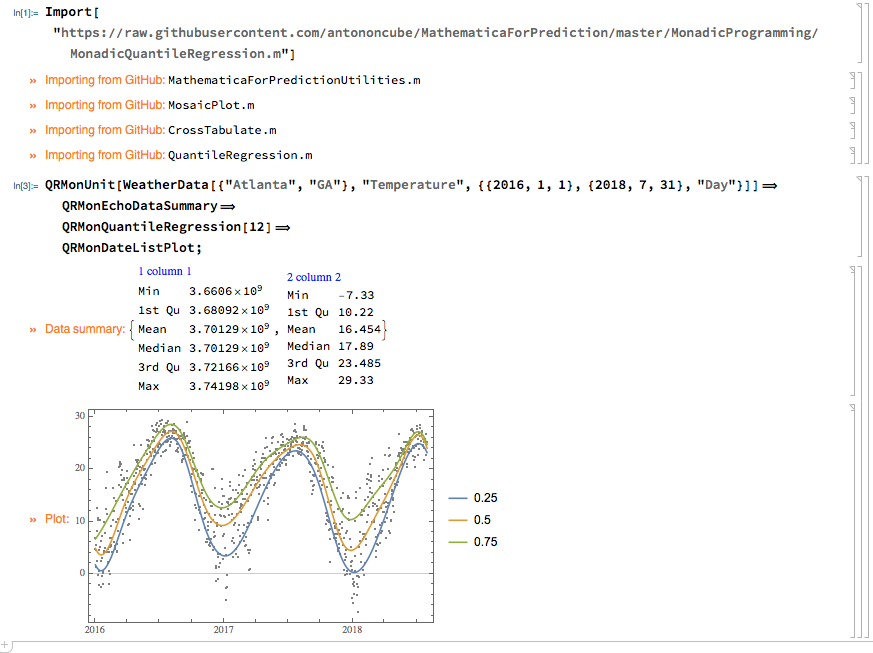Thanks for the kind words, John!
The QRMon package and the packages needed internally by QRMon can be loaded with the command:
Import["https://raw.githubusercontent.com/antononcube/MathematicaForPrediction/master/MonadicProgramming/MonadicQuantileRegression.m"]
Here is a screenshot:
